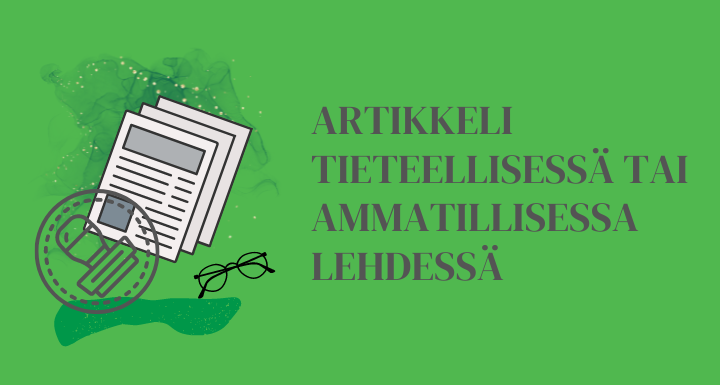Safety Culture in Craft, Design and Technology Workshops
Artikkeli:
Leino, M., & Lindfors, E. (2021). Safety Culture in Craft, Design and Technology Workshops: An Analysis of Safety Documents in Teacher Education. Techne Serien – Forskning i slöjdpedagogik och slöjdvetenskap, 28(2), 332–339. https://journals.oslomet.no/index.php/techneA/article/view/4358
Tiivistelmä:
The teaching and learning of craft, design and technology (CDT) subject is carried out in materially and technologically rich learning and working environments. The importance and role of safety culture in experiential learning in CDT education is essential for all members of an educational organization to endorse. The safety culture of workshops should include inspection and maintenance of facilities, monitoring safety incidents and safety training as part of occupational safety to avoid near-misses, accidents and injuries. The aim of this study is to consider the safety culture of the learning and working environments of CDT education based on written safety documents (N = 3) in order to generate a better understanding of safety culture. The study question is: What categories and subcategories of safety culture can be recognised in CDT education learning and working environments in teacher education? The study was based on data from three safety and security documents: University Campus Rescue Plan, Safety Management Document in CDT Education and External Safety Audit Report of CDT Education. The data were gathered from these documents and categorized according to the Edusafe model’s main categories: preparedness and prevention, incident management, recovery and safety management. The data were further divided into ten subcategories, and the final results were formed on this basis. The results reveal that, in general, safety issues are well identified, and many key measures are documented thoroughly. However, at the same time, recovery isn’t considered at all. It seems that the safety culture of CDT education needs reconsideration: What are the roles and procedures of recovery?
Lisätietoa:
https://journals.oslomet.no/index.php/techneA/article/view/4358

